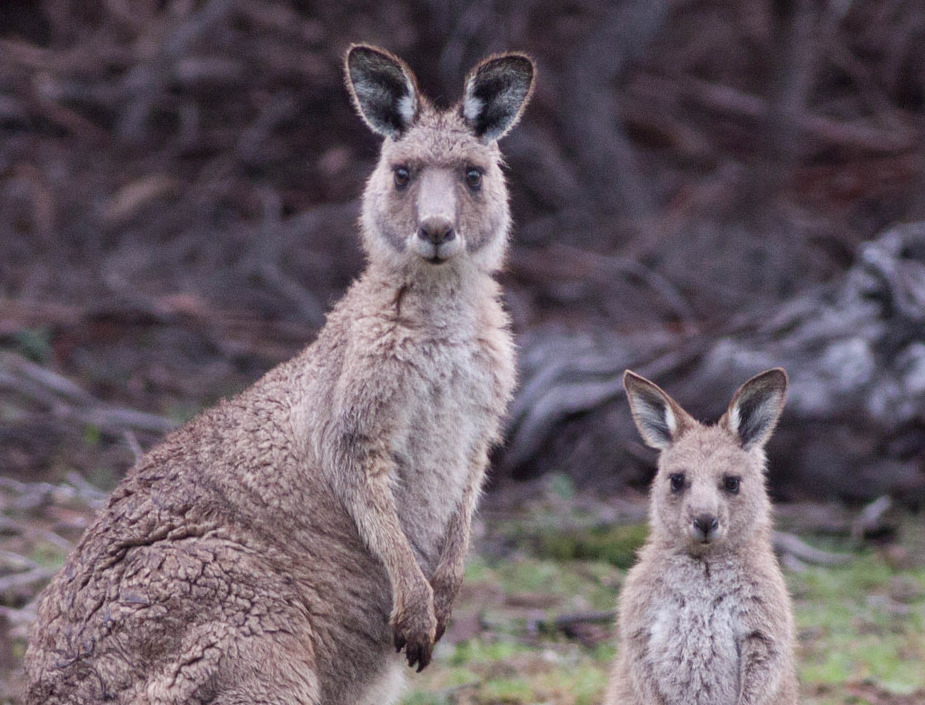
Sciences & Technology
Lizards keep it local when it comes to colour change

Researchers have discovered that kangaroo offspring are much better off staying close to their mothers even when weaned and independent
Published 5 April 2017
When it comes to thriving and surviving, mother kangaroos really do know what’s best.
A major behavioural study of kangaroos and their young has found that young kangaroos that had permanently moved out of the pouch, were better able to feed themselves and survive to adulthood the more time they spent hanging out with their mother.
The results, published in the journal Behavioral Ecology and Sociobiology, were a surprise to the researchers because unlike primates, kangaroo mothers rarely groom or interact with their young, and their so-called “young-at-foot” don’t really need to be shown how to chew grass. But there is just something about being with mum that helps their young-at-foot survive.
Lead researcher and biologist Dr Wendy King suspects that the presence of a mother may be crucial in protecting young-at-foot from harassment from other adult females, keeping them safe from injury and giving them time to eat in peace.

“What we found is that the amount time offspring spend with their mother is really important. The more time they spend with their mother, the heavier and bigger they are getting even though they are no longer suckling,” says Dr King, a Visiting Scholar at the University of Melbourne, who conducted the research for her PhD at the University of Queensland and is now based at Université de Sherbrooke in Quebec, Canada.
“I suspect that what may be going on here is that offspring who are close to their mother are less subject to interference or harassment from adult females.
“Other adult females will growl and claw at young-at-foot that don’t belong to them if they get too close,” she says.

Sciences & Technology
Lizards keep it local when it comes to colour change
Dr King and her colleagues from the University of Melbourne spent six years studying a population of eastern grey kangaroos in Wilsons Promontory National Park on Australian’s rugged south eastern coastline. In what is the most extensive such study of kangaroos ever undertaken, the researchers tagged both mothers and their joeys, and then relentlessly observed them in the wild.
Dr King herself spent five hours every day for 10-12 days a month over a period of 27 months watching the kangaroos through binoculars and keeping careful track of the distance the young would wander from their mothers. They would also periodically recapture them and weigh them. In all, 129 young-at-foot were tracked between the ages of 10 months and 21 months, which is the age at which they become nutritionally independent.
Kangaroos only emerge permanently from their mother’s pouch at age 10 months, but then spend a further 8-11 months periodically suckling as young-at-foot.
The researchers measured an offspring’s time spent with its mother, both when mother and young were together as part of a larger group and when they were just with each other. They found that those who spent more time with their mother were around 6 per cent larger and 19 per cent heavier at two years old. But additionally, those that spent more “quality” time alone with their mother had higher survival rates.

That would support the idea that young-at-foot benefit from being kept away from other females, while the presence of the mother still helps to signal dangers like predators.
“It provides an opportunity for offspring to feed calmly with their mothers away from other adult females,” she says.
But while it makes good sense for independent young to stay near their mothers, the researchers found that there was a huge variation in their behaviour. While some were always with their mother, others were happy to wander off for long periods, only spending 20 per cent of their time with their mothers. The latter tended to be males.
The researchers defined an offspring as being “with” its mother when it was within 10 metres of her, or within 10 metres of a group including the mother.
“It tended to be the males that wandered off to play with other young animals or to check out the other adults.”
The study, which is ongoing, also found that climate has a huge influence on juvenile survival. In the first cohort of young-at-foot studied, the survival rate from permanent pouch emergence to 21 months of age was 75 per cent, falling to 59 per cent for the second cohort. But for the third cohort, which developed during a time of drought, the survival rate was just 21 per cent.
Co-author Professor Marco Festa-Bianchet from both the University of Melbourne and Université de Sherbrooke, says the research finding that mother kangaroos play a key role in the health of their young even after they have reached independence has important implications for how kangaroo populations are conserved or managed.
“The improved fitness that mothers appear to facilitate is relevant to conservation because it suggests that when mothers may be culled, or accidentally killed by vehicles, juvenile survival is likely to decrease,” says Professor Festa-Bianchet.
The other co-authors on the research are Associate Professor Graeme Coulson, School BioSciences, the University of Melbourne, and Associate Professor Anne W. Goldizen, School of Biological Sciences, University of Queensland.
Banner image: Ron Knight/Flickr